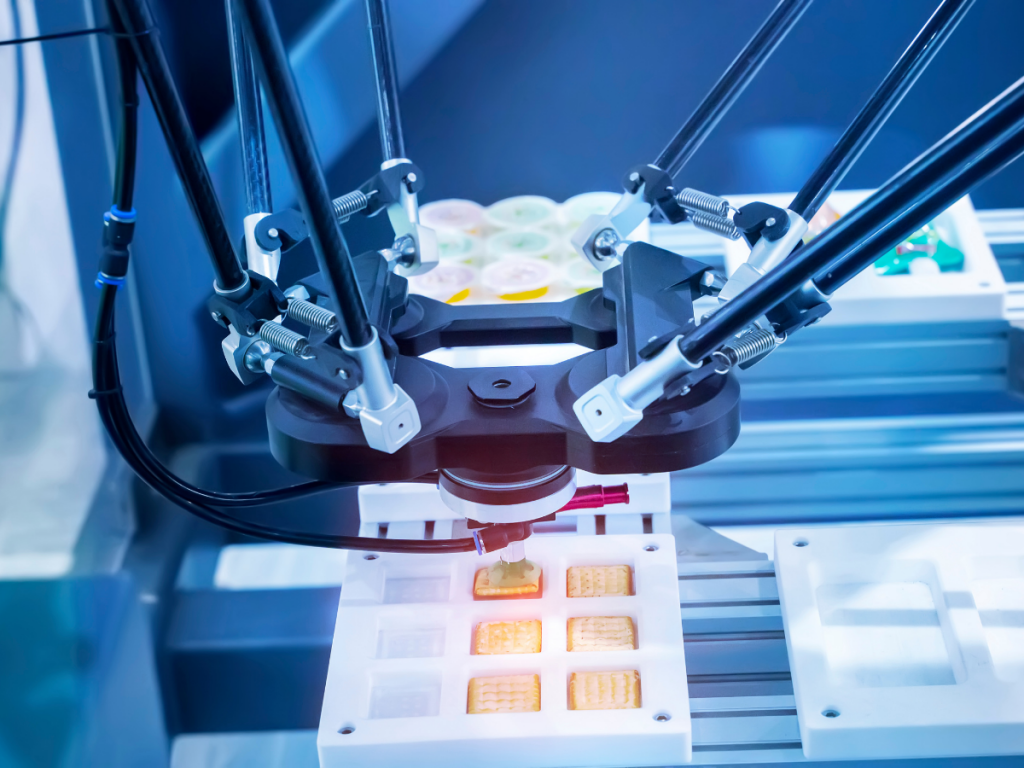As labor market woes continue, adopting some degree of automation is no longer optional for companies looking to remain agile and equipped to meet future consumer demands.
Even industries that historically haven’t struggled with labor shortages are now finding it challenging to hire staff. With a peak record of 11.3 million jobs open in January 2022 and not enough workers available, more manufacturers are turning to robotics to fill the gaps.
In fact, U.S. factories ordered a record 29,000 robots during the first nine months of 2021, a 37% increase from 2020, according to data from the Association for Advancing Automation (A3).
The good news? Automated systems are getting cheaper to implement and improving technology is making systems more reliable. At Stellar, we’re constantly monitoring developments and best practices for leveraging robotics in our clients’ facilities to help them improve efficiency and productivity — not to mention combating that growing labor gap.
Let’s review some modern automation tools and the many ways robotics can be implemented into the food manufacturing process.
What are the applications of robotics in food processing?
Automation technology is always improving and today’s robotics capabilities are increasingly complex. Robotics can have a variety of applications in food processing, such as:
- Picking and placing of fruits and vegetables
- Robotic cutting and slicing seafood or beef
- Automated dispensing of product recipe ingredients
- Robotic cleaning to maintain safe working environments
- Vision-guided sorting robots for produce, poultry and more
- Automated canning, bottling, packaging and palletizing
Finding the right combination of systems to best fulfill your manufacturing needs is key to optimization — and this often relies on collecting and utilizing actionable data.
AGV, co-bot and AS/RS technology
While specific automation and robotics configurations will vary depending on the individual facility, product and process, there are a few broad categories that are seeing significant investment. Let’s examine a few of those solutions that are growing in popularity:
Automated guided vehicles (AGVs)
AGVs are computer-controlled and wheeled, meant to carry loads safely without a driver on board. These machines can be precisely controlled to move at a set pace along a path, and usually feature automatic obstacle detection bumpers.
AGVs offer multiple uses to save time for human workers and improve the efficiency of processing lines. For example, an AGV can assist with transporting ingredients for certain recipes at strategic times. They can also help avoid delays in specifically timed processes, such as when producing bread dough or other food items that require time to rise or rest. Used in these ways, AGVs are useful in maintaining efficient operations by improving a plant’s scheduling capabilities.
Co-bots
Collaborative robots, or co-bots, are meant to function alongside human workers to help streamline processes, including tasks such as assembly, loading and packaging. Co-bots offer more human-like dexterity to handle smaller items beyond pallets, helping minimize human interaction. These systems are designed for agility and flexibility, allowing them to be easily moved to different spots within the manufacturing process as needed.
The market for co-bots has boomed, thanks to their wide range of capabilities. According to the U.S. Department of Commerce’s National Institute of Standards and Technology (NIST), the use of co-bots is expected to grow by more than 50% in the next five years and ultimately represent nearly one-third of the entire industrial robot market.
Automated storage and retrieval systems (AS/RS)
AS/RS are designed to store and retrieve stored products, offering inventory on demand. AS/RS technology is capable of achieving more than its name suggests. These systems continue to grow in sophistication, with abilities such as automatically balancing and distributing the weight of pallets so they don’t collapse, which helps ensure the safety of surrounding plant personnel.
The technology is popular in warehouses, as AS/RS allows these storage facilities to be built taller than traditional warehouses. Therefore, AS/RS structures have a smaller footprint, and they offer increased flexibility with their modular designs. The need for a smaller footprint means more storage capacity using less real estate.
The future of human labor
With the widespread adoption of automation, where does that leave human workers? Although some roles will be displaced by robotics, automation is expected to create more jobs for people in the long run.
Automation is predicted to create 58 million more jobs than it displaces overall, according to the World Economic Forum’s Future of Jobs 2020 report. Robots can benefit workers by tackling the most dangerous, repetitive and messy tasks, opening more strategic and substantive roles to their human counterparts. In addition to increased safety and efficiency, robotics can offer more flexibility for continued operations during shifts that are often challenging to staff, such as holidays or weekends.
An automated workforce can serve as a team alongside humans, according to Nancy Cooke, professor of human systems engineering at Arizona State University. But, for this type of team to be successful, Cooke says it’s crucial for developers to help the machines communicate with and understand humans. By planning and programming them effectively, manufacturers can train robots to be team players that work alongside personnel on the plant floor.
If you haven’t considered implementing robotics into your manufacturing process, there’s no time like the present to start exploring the possibilities and planning for a more efficient future.
Where should you go from here? Stellar’s automation and controls experts are here to help. Feel free to leave a comment below or email me your questions at foodforthought@stellar.net.



